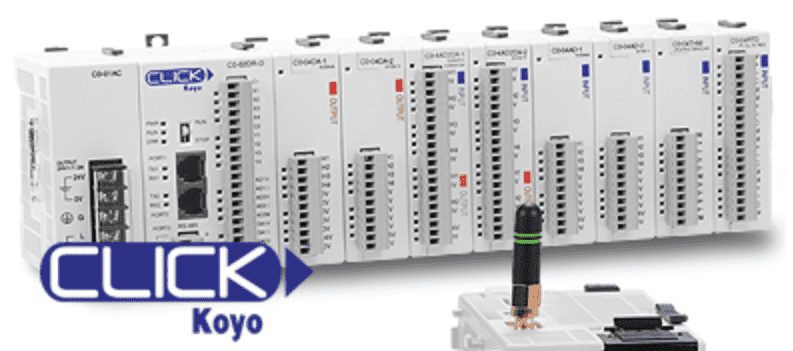Q: What is a Click PLC?
A: A Click PLC is a small programmable logic controller designed and manufactured by AutomationDirect. It is commonly used in industrial automation and control applications.
Q: What are the features of a Click PLC?
A: A Click PLC features a variety of input and output options, including digital inputs and outputs, analog inputs and outputs, and communications ports. It also includes a user-friendly programming interface and support for ladder logic programming.
Q: What programming languages are supported by a Click PLC?
A: A Click PLC supports ladder logic programming (LD). Since a PLC executes source code, the programming software will determine the language(s) supported. (CLICK Programming Software) Ladder logic programming is the most common language used to program PLCs.
Q: What is the maximum number of I/O points supported by a Click PLC?
A: The maximum number of I/O points supported by a Click PLC varies depending on the model. The Click PLC is a modular style PLC. The CPU unit will have inputs and outputs. You can then add additional I/O points to complete your system. Configure a CLICK Family PLC link, which will quickly show you the maximum I/O supported for the CPU.
Q: What is the programming software used for a Click PLC?
A: The programming software for a Click PLC is called the CLICK Programming Software. It is a free software tool that allows users to program, monitor, and debug their Click PLC applications.
Q: What is the difference between a Click PLC and other PLCs?
A: Click PLCs are designed to be easy to use and affordable for small to medium-sized applications. They have a compact design, user-friendly interface, and a range of features that make them ideal for simple control tasks. Other PLCs may be more powerful and have a more comprehensive range of features, but they are typically more complex and expensive.
Q: Can a Click PLC communicate with other devices?
A: Yes, a Click PLC can communicate with other devices using a variety of protocols, including Modbus RTU, Modbus TCP, Ethernet/IP, MQTT, and others. This is also dependent on the Click CPU model that you are programming.
Q: Can a Click PLC be used for safety applications?
A: No, Click PLCs are unsuitable for safety applications requiring safety-rated inputs and outputs or safety-certified programming. A safety-rated PLC or relay should be used instead for safety applications.
Q: Where can I find more information about Click PLCs?
A: More information about Click PLCs can be found on the AutomationDirect website and in the user manuals and technical specifications provided with the products. Additionally, there are many online forums and communities where users can ask questions and share knowledge about Click PLCs.
Q: Where can I find the Address Picker?
A: There are a few ways to call up the address picker.
Main Menu | Program | Address Picker…
You can also call this up under the Ladder Program in the Program tab in the Navigation menu.
The last way is using the Data View. When looking for a memory location, selecting the three dots beside the location will call up the address picker.
Click PLC Support Links
The Click PLC can be programmed using free Click programming software from Automation Direct. Here is a link to the software.
Version 3.31
Version 2.60
The entire Click PLC series can be found here. This includes the Click PLUS release.
All previous posts and information are still valid with the Click PLC line-up.
YouTube Click Playlist
YouTube Click PLUS Playlist
Click and Click PLUS PLC Overview
Click and Click PLUS PLC Videos from Automation Direct
Modbus Learning Links:
Simply Modbus Frequently Asked Questions
Modbus TCP/IP Overview – Real-Time Automation
All You Need to Know About Modbus RTU – Video

